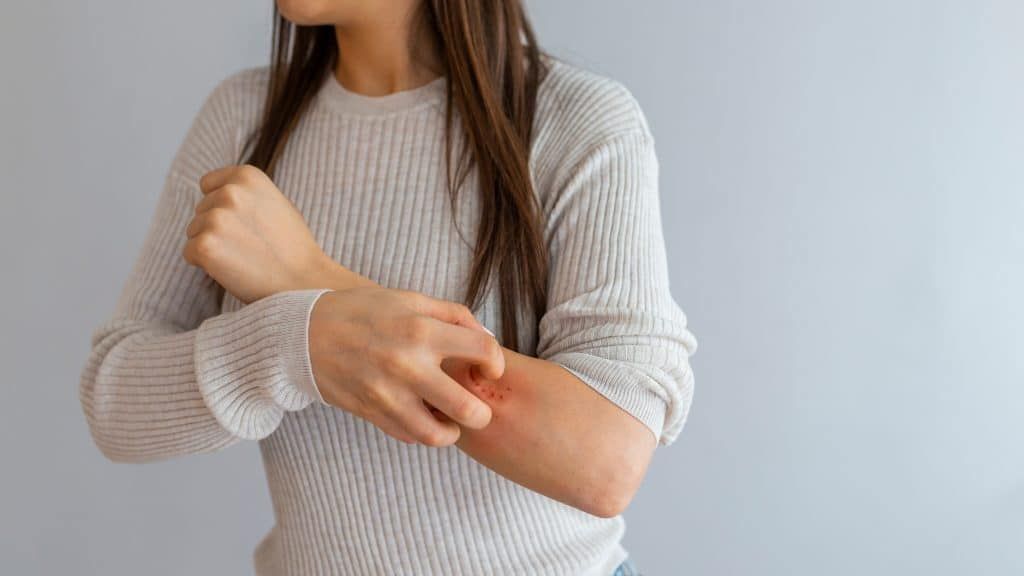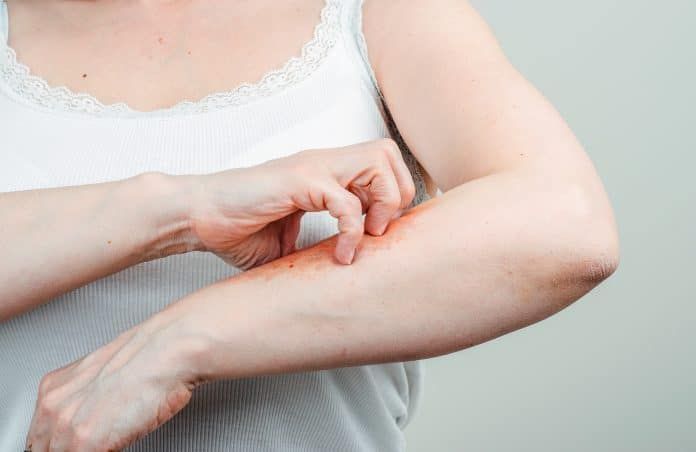What is reverse psoriasis?
Reverse psoriasis: is what ?
Psoriasis is a chronic inflammatory skin disease, autoimmune, which can take many forms. If it is absolutely not contagious and is benign in the vast majority of cases, it can greatly alter living conditions… because like any skin disease, it is visible ! In this case, psoriasis is characterized by the red, scaly patches it causes to appear on the skin. Not very pleasant to have a red face or a peeling scalp. In some forms, psoriasis also causes itching.
Here, we are going to teach you more about a specific form of this condition: reverse psoriasis inverted psoriasis. You don't see what it's all about ? We explain !
Qu’is reverse psoriasis ?
When talking about psoriasis, it is always necessary to know what form of the disease we are talking about. All psoriasis is an inflammatory disease, chronic, incurable, and evolves by flare-ups. But there are different types depending on the body areas that are affected (nail, foot, hand, face, etc.).). In this case, it is the folds that interest us: in reverse psoriasis, the folds will present lesions – folds that are also called reverse zones !
This doesn't really tell you ? You should know that reverse psoriasis can affect the underside of the armpits, the mammary folds (under the breasts), the back of the knees, the inter-gluteal folds, the elbow folds, the stomach folds, the inguinal folds (at the top of the thighs) or the navel. In fact, all flexural areas of your body can be affected. Inverted psoriasis can also be associated with genital psoriasis.
Now that we know where the reverse psoriasis is located, let's see how it manifests itself.
What are the symptoms of reverse psoriasis? ?
The inverted psoriasis is a rather rare form of psoriasis. Most frequently associated with this skin disease are inflammatory reactions, characterized by well-defined red patches that appear on the skin, themselves covered with scales – whitish crusts that detach from the surface of the epidermis. All of this is related to a too rapid turnover of skin cells, which eventually accumulate and cause inflammation.
In reverse psoriasis, the scales are not very frequent: understand that only the inflamed red patches are visible, clear and smooth. Why this form is not scaly ? Simply because perspiration, which is lodged in the folds, makes the skin moist and removes this dead skin caused by psoriasis. Unfortunately, this form of psoriasis can be very painful, due to the locations it affects.
You should also know that inverted psoriasis is often confused with mycosis. Indeed, mycosis – also called dermatophytosis – also affects the skin folds. However, this type of fungus tends to affect older people – whereas psoriasis patients are of all ages.
Depending on the fungus responsible for the mycosis, which is therefore infectious, the mycosis will be characterized by a small crack or break in the skin of the fold that will itch, by pustules or blisters full of liquid on the periphery. A dermatologist or doctor will be able to tell the difference, sometimes with the help of an additional examination.

How to treat reverse psoriasis ?
Psoriasis is a disease that remains shrouded in mystery, as much about its exact causes as about the treatment that could permanently cure those affected. It is not known precisely where the disease comes from – even if a favorable genetic background is evoked – nor is it known how to eradicate the skin condition. However, solutions do exist, starting with natural treatments for psoriasis.
Here are also our tips to make your life more beautiful, despite this unpleasant disease.


